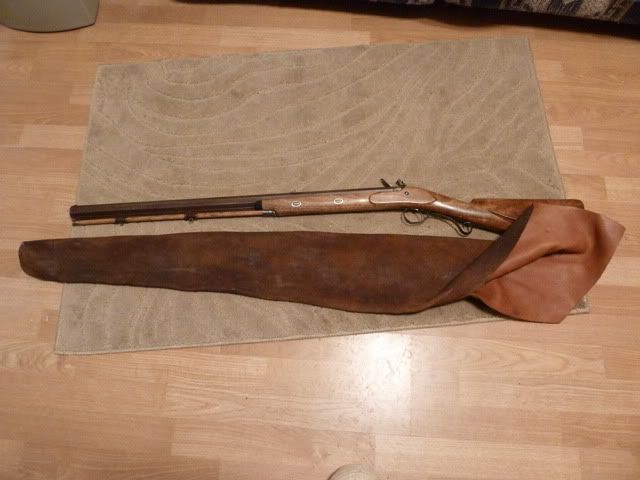Gentlemen.
GOOD blackpowder will not absorb enough moisture from the AIR to cause it to be disfunctional. In fact quality powder than has been dampened so much as to be unusable but still granulated can be dryed on a sunny day since it will give up excess moisture to the air. Cheap powder will not do this is most cases and may be permanently damaged by humidity alone so far as use in firearms is concerned.
HOWEVER, for years "good blackpowder" was a relative term in the US since our only supplier was using CONTAMINATED saltpeter and CONTAMINATED water. The bad Potassium Nitrate (its invariably contaminated with SODIUM Nitrate unless pure) WILL make the powder moisture sensitive to the point it may be made useless by humidity alone. But they did not particularly care I guess so long as the Military would accept it.
As a friend wrote me who knew of such things and took the powder appart to check out the components "I guess they did not realize that "pure" Potassium Nitrate was not supposed to contain twigs and pebbles". This did not change until the company supplying them with the crap went under and they had to find a different supplier who apparently supplies the proper grade material.
Powder made with PURE Potassium nitrate will only absorb a given amount of water from the AIR. Then the powder will no longer accept anymore. This can be shown by drying samples, weighing them then exposing them to the air in a dry area with no artificial heat for 24-48 hours, weighing them at intervals. This was done in eastern PA where the humidity is high.
While its BALLISTICS may be somewhat effected from the extra moisture it will still light normally. However, liquid water WILL wet the powder. If the lock area is even slightly fouled with BP fouling even in some nook or cranny it will suck up humidity, liquify and then WET THE POWDER to some greater or lesser extent. This is why in high humidity (I grew up and shot MLs in Iowa) the fouling in the pan will actually liquify between shots while loading. So if you HUNT care must be take to NOT foul the gun, percussion or flint, in any manner. It needs to be completely clean of any fouling in the pan or around the vent.
The main problem is that most people think that modern powder is better than powder of the past. This is not the case except with the premium powders, though honestly changing suppliers and locations should have cured most of the domestic makers problems in this regard.
Chances are if the powder is turning the soup in the pan that either the powder is poor quality or the gun is not clean OR its been inadvertently exposed to liquid water.
If a CLEAN rifle is primed with Swiss Null B (finer than FFFF) and kept DRY, in a COVER. its should be reliable all day regardless of humidity level.
I would point out that powder horns and flasks are not air tight. If the powder will soak up enough water from the air to liquify it will do this in the horn or flask. This is shown by reports of people using some of the hygroscopic sugar powders finding the powder had liquified in their horns after a few weeks hanging on the wall.
Fog, BTW is liquid water not humidity.
Think about it. On a warship in the British Navy sailing for India or the Pacific. The magazine is at or below the waterline. If the powder goes bad due to humidity? Granulation will not prevent this if the saltpeter is contaminated.
This is why powder makers even centuries ago were near fanatical over the purity of the saltpeter (especially) and sulfur. About the tiniest detail of the charcoal, what it was made from, when was the wood cut and how it was burnt.
Powder for the military back in the day was not allowed to have any graphite added (makes poorly polished powder look good and increases fouling to some extent) and it was tested to make sure the ballistics equaled a set standard.
It was serious business for both the powder makers and the military. Victory or defeat could hinge on the powder.
Dan





